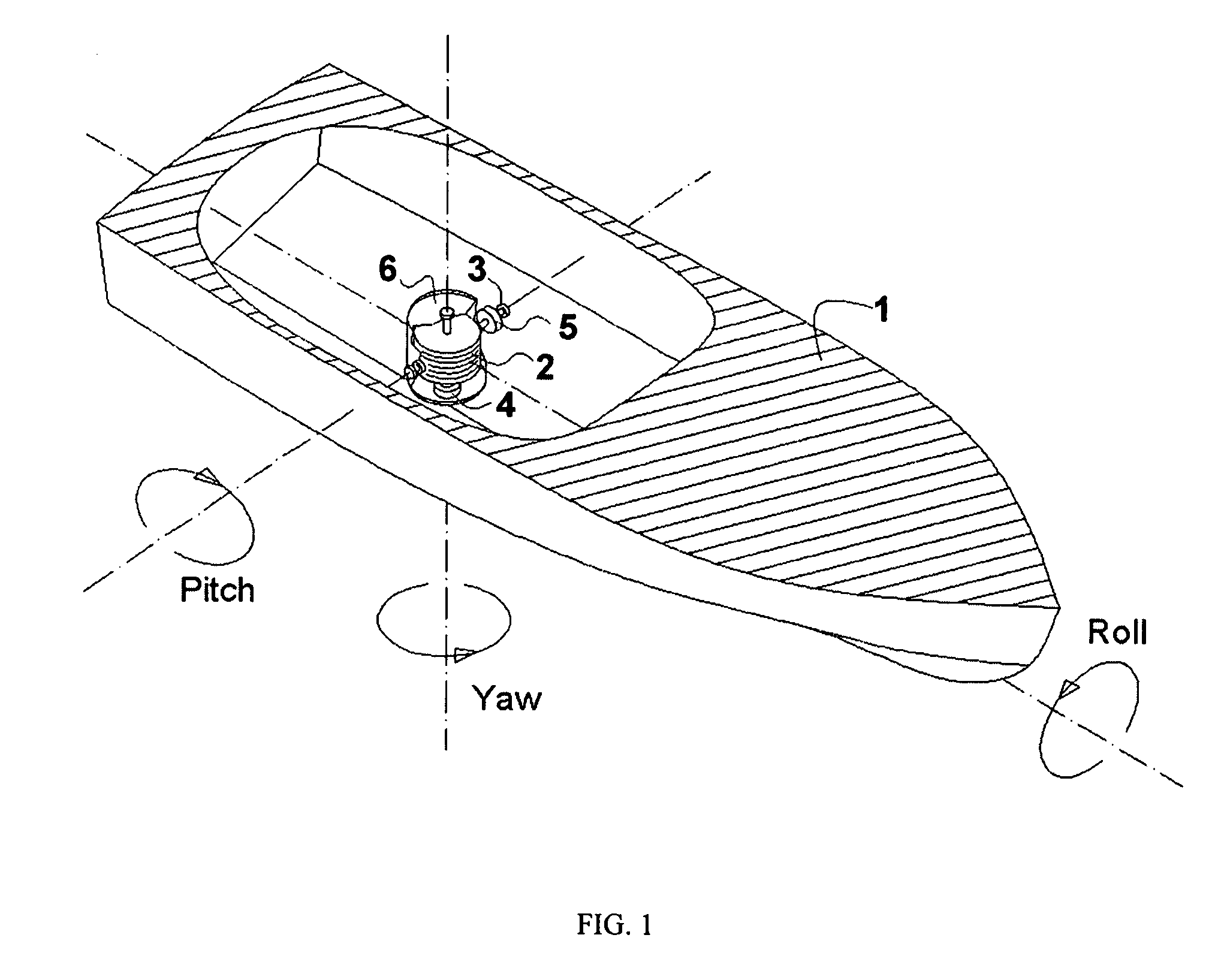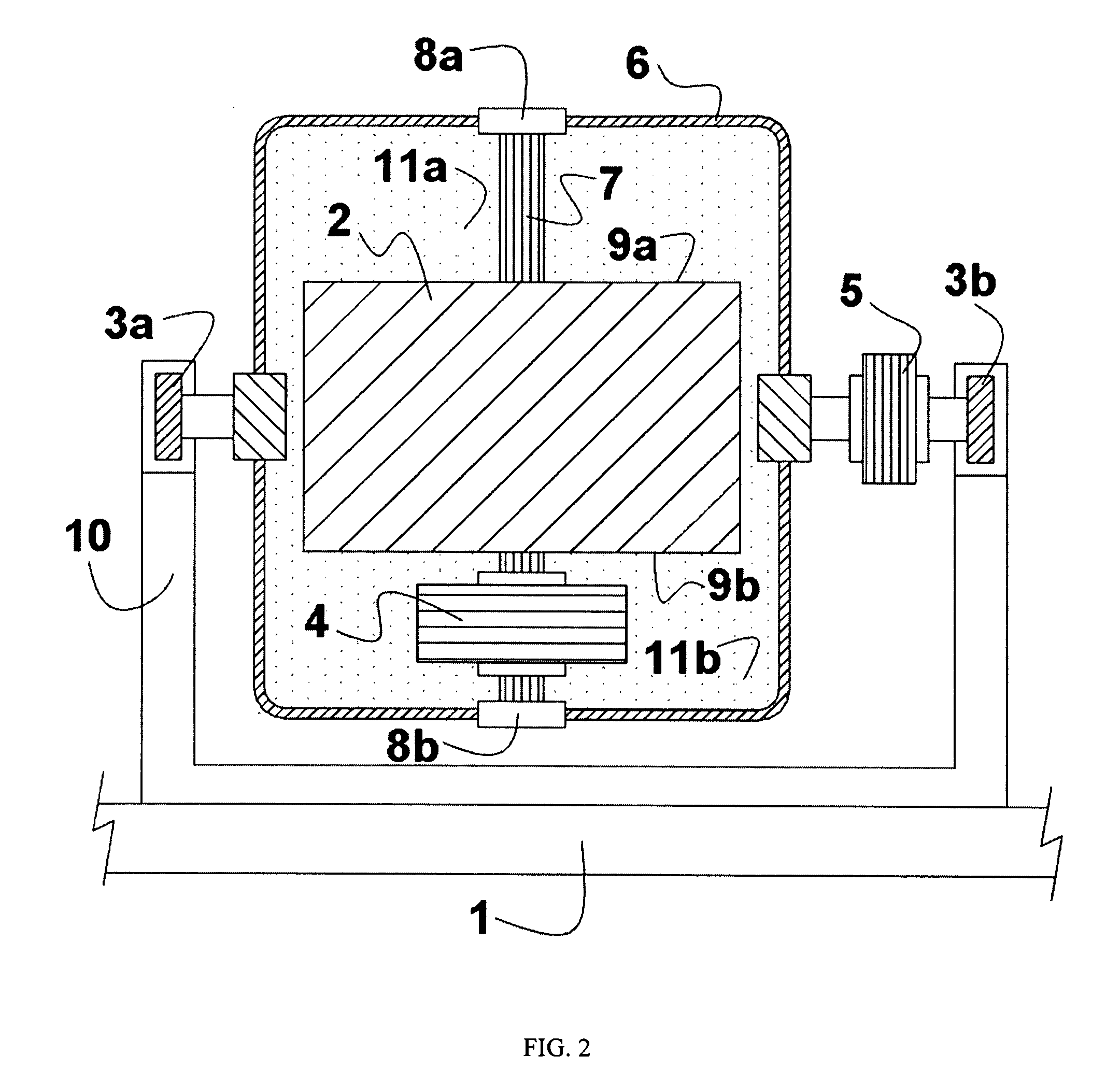Gyrostabilizer for small boats
a gyrostabilizer and small boat technology, applied in special-purpose vessels, instruments, transportation and packaging, etc., can solve the problems of people and animals experiencing motion sickness, inefficient at low speeds, and prior gyroscope-related anti-rolling systems that are too large for relatively small vessels, so as to reduce ship roll motion and reasonable stabilization
- Summary
- Abstract
- Description
- Claims
- Application Information
AI Technical Summary
Benefits of technology
Problems solved by technology
Method used
Image
Examples
first embodiment
[0043]In reference to FIG. 4, the drum (2) is fastened to axle (7) by webs (16). A web is a radial plate such as the end caps of a drum, whose purpose is to attach the outer drum surface to the axle. The axle / drum assembly spins around axis (15). The drum (2) is larger than the inner webs (16), which are attached inside the ends of the drum.
second embodiment
[0044]In reference to FIG. 5, the drum (2) is fastened to axle (7) by webs (16). The axle / drum assembly spins around axis (15). The web (16) is the same diameter as the drum (2), and the drum spans the space between webs.
third embodiment
[0045]In reference to FIG. 6, the drum (2) is fastened to axle (7) by three or more webs (16). The axle / drum assembly spins around axis (15). The drum (2) is larger than the inner webs (16), which are attached inside the drum.
[0046]In reference to FIG. 7, in a second embodiment of the gyrostabilizer system of the present invention, the motor (4) again spins the gyrostabilizer drum (2) at constant, high speeds and the drum spins in bearings in the shroud (6). The shroud, drum and spin motor assembly has gimbals (3), and the gimbals are mounted to the boat (1). Angular motion of the shroud, drum and spin motor assembly around the gimbal axis is controlled by servo motor (5). Roll angle and roll rate are measured by sensors and information from these sensors is input to an active controller that drives the servo motor. In this embodiment the gimbal axis is coincident or parallel with the yaw axis of the boat or ship (1).
[0047]In reference to FIG. 8, in a third embodiment of the gyrosta...
PUM
 Login to View More
Login to View More Abstract
Description
Claims
Application Information
 Login to View More
Login to View More - R&D
- Intellectual Property
- Life Sciences
- Materials
- Tech Scout
- Unparalleled Data Quality
- Higher Quality Content
- 60% Fewer Hallucinations
Browse by: Latest US Patents, China's latest patents, Technical Efficacy Thesaurus, Application Domain, Technology Topic, Popular Technical Reports.
© 2025 PatSnap. All rights reserved.Legal|Privacy policy|Modern Slavery Act Transparency Statement|Sitemap|About US| Contact US: help@patsnap.com



